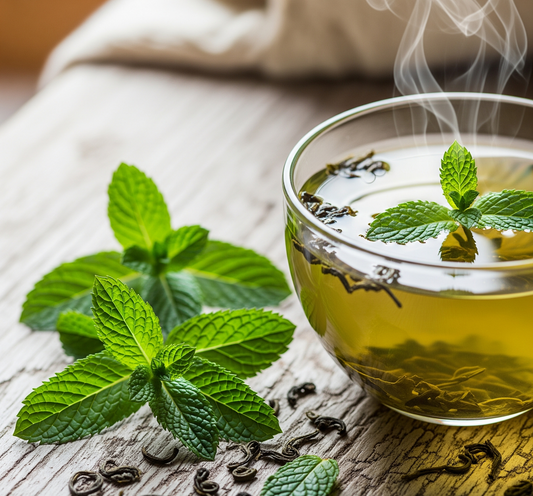Oolong tea, a semi-oxidized beverage, bridges the gap between black and green tea, offering a unique flavor profile and numerous health benefits. Known as "the tea of the dragon," it boasts antioxidants that may aid weight loss, improve heart health, and enhance cognitive function. Discover the art of oolong tea production and explore the distinctive qualities of Nepalese oolong tea for a rich tasting experience.
As tea lovers, we’ve all heard of black tea, green tea, and white tea. But there’s one more in the “Big Four of Teas” that you might not have heard of - the enigmatic oolong tea. This tea is a fascinating beverage that sits snug between black and green tea, offering a truly unique flavor profile along with a range of supposed health benefits. So, if you’ve ever wondered, “What is oolong tea?” then you’ve come to the right place.
Here, we will explore this traditional Chinese tea, its benefits and take a special look at Nepalese oolong tea.
What is Oolong Tea?
Oolong tea, often referred to as “the tea of the dragon,” is made from the leaves of the Camellia Sinensis plant, the same plant used for green and black teas. This tea falls somewhere in between black teas, which are fully oxidized, and green teas, which are only partially oxidized. Hence, oolong tea shares some common characteristics with both of these types of tea.

Oolongs are a unique type of tea that can vary in their oxidation levels that can range anywhere from eight to eighty percent, depending on the particular tea. So, one oolong tea can differ widely from another. Furthermore, some oolong tea may taste more similar to black tea while others could be near indistinguishable to green tea depending on how they are processed.
Let’s delve deeper into the processing method.
How is Oolong Tea Made?
Oolong tea is a delightful blend of art and science, and its production process is as intricate as its flavor profile. Here are the key steps in producing oolong tea:
- Withering: Freshly picked tea leaves are laid out in the sun and let to lose moisture and soften. Doing this makes the leaves easier to roll.
- Cooling: The leaves are then left to rest and cool down, allowing them to wilt and prepare for rolling.
- Light Rolling: The leaves are gently rolled to bruise them. This helps break the cell walls and release enzymes that start the oxidation process.
- Oxidizing: The tea leaves then undergo partial oxidation that could range from 8% to 80%, which determines the final flavor and appearance.
- Roasting: The rolled and oxidized leaves are then exposed to heat to stop the oxidation process. This also helps add important flavors to the tea.
- Final Rolling: The leaves are then rolled for the second time to shape them and enhance their flavor profile and give it its final shape.
- Drying: The leaves are fully dried to prevent spoilage, ensuring they can be stored properly.
- Hand Sorting: Finally the dried leaves are sorted by size and color to create uniform lots, each graded based on appearance.
What is Oolong Tea Good For?
Oolong tea is not just a delightful beverage; it also boasts a variety of health benefits:
- Weight Loss: According to an article on WebMD, the polyphenols found in oolong tea has shown to lower blood sugar levels and reduce insulin resistance, both risk factors for diabetes. Studies show the tea's antioxidants activate enzymes that break down triglycerides and lower cholesterol, further reducing diabetes risk.
- Heart Health: Regular consumption of oolong tea has been linked to improved heart health. Studies from the British Journal of Nutrition, suggest that it may lower the risk of heart disease and stroke by improving cholesterol levels and reducing blood pressure.
- Blood Sugar Control: Oolong tea may also help in regulating blood sugar levels, making it beneficial for people at risk of type 2 diabetes.
- Brain Health: The caffeine and L-theanine in oolong tea may enhance cognitive function and alertness, making it a great choice for those needing a mental boost.
- Dental and Bone Health: All teas naturally contain fluoride. So drinking oolong tea may help prevent cavities. Furthermore, according to the same WebMD article, the fluoride content in oolong tea is comparable to what dentists recommend to prevent tooth decay and tooth loss. Regular tea drinkers, including those who enjoy oolong, have also been shown to have higher bone mineral density, which can help reduce the risk of fractures.
What is Special About Oolong Tea?
What makes oolong tea truly unique and special is its versatility in flavor and aroma. As mentioned before, oolong tea can be anywhere from eight to eighty percent oxidized. So depending on the oxidation level as well as the processing techniques, this tea can range from light and floral to dark and roasted. This variability allows for an amazingly rich and nuanced tasting experience that can be compared to fine wines.

You won’t have to search too long and hard to find tea enthusiasts savoring oolong tea the same way as wine specialists discuss the nuances of different grape varieties and terroirs. In addition to its diversity of flavors, oolong tea is often celebrated for its artisanal production. Most types of oolong teas are crafted by skilled tea masters who have honed their craft over generations.
What Makes Nepalese Oolong Tea Unique?
While oolong tea is celebrated worldwide for its complex taste, Oolong tea from Nepal has its own unique characteristics that over the years, has managed to set it apart from the rest. What exactly sets it apart? And how is it different from the rest of the oolong tea that you might find?
The tea-growing regions in Nepal benefit from a unique microclimate created by the cool Himalayan winds and warm air from the Bay of Bengal. This unique environment encourages the tea plants to develop richer flavors and aromas.
Key Features of Nepalese Oolong Tea:
- Microclimate: The combination of Himalayan winds and warm air creates a volatile environment that helps amplify and enhance the flavor compounds in the tea leaves. This results in a richer and more flavorful tea.
- Terroir: The mineral-rich, organic soil of the Himalayas also greatly contribute to the unique taste of Nepalese oolong tea, providing a distinct flavor profile that is hard to replicate elsewhere.
- Elevation: Grown at high altitudes, Nepalese oolong tea leaves mature comparatively slowly, resulting in more complex flavors and aromas that you won’t find anywhere else.
- Artisanal Production: Many Nepalese tea farmers use traditional methods that have passed down through generations combined with innovative techniques, resulting in unique varieties of oolong tea that reflect the local terroir.
- Passion for Quality: The dedication of young tea makers in Nepal, who blend traditional skills with modern experimentation, leads to a diverse range of high-quality oolong teas.
Pick from a range of premium oolong tea from Nepal Tea Collective today.
Oolong tea is a delightful and versatile beverage that offers several health benefits along with a rich tasting experience. Whether you’re sipping a traditional Chinese oolong or exploring the unique flavors of Nepalese oolong tea, you’re sure to enjoy a unique tea drinking experience.




